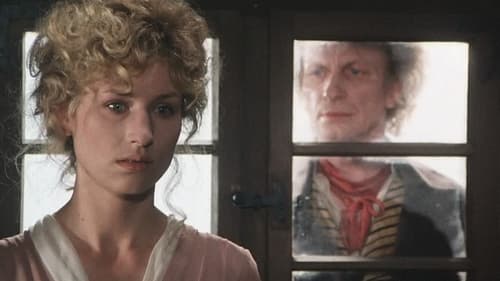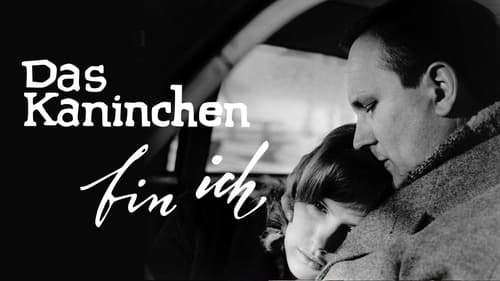
Music

Original Music Composer
The time is the French Revolution; the place is the village of Travers, ensconsed in neutral Switzerland. Prussian aesthete Herman Beyer is on the verge of divorcing wife Corinna Harfouch. Radical writer Uwe Kokisch, Corinna's lover, hopes to find a way of smoothing out animosities. What follows, however, is a nonstop drinking binge. The film subliminally addresses the then-prevalent issue of a divided Germany. Whether or not it succeeds is unimportant; Treffen in Travers (Reunion in Travers) has proven to be a crowd pleaser wherever it has been shown.

Music
In a small town, everyone has tried to forget what happened shortly after WWII. That is, until a stranger finds a book that Jadup (Kurt Böwe) gave to the young refugee Boel (Katrin Knappe), who resettled in the town over 30 years ago. Painful memories about Boel and the post-war period begin to surface and shake up the whole town. Boel vanished back then and nobody knew why. Word spread about a rape and some tried to blame a Russian soldier. Jadup, the town's respected and popular mayor, remembers, though, how he mistrusted Boel and did not help her through this difficult time; HE didn't even notice THAT Boel loved him. Jadup's confrontation with the past gives him a new, critical view of his current situation and surroundings.

Music
A story spanning three generations, from 1871 to 1945. When Gustav Wengler, a farmer’s son, returns from the Franco-German war in 1871, he goes to work for a precision mechanics and optical company, where he soon becomes a master craftsman. Wengler loyally promises the owner on his deathbed that his sons and grandsons will also stand by the company.

Music
Dresden old and new, in between photo documents from 1945/46, the time of resurrection, enriched by very personal commentaries by woman director Annelie Thorndike. Music for solo trumpet, composed by Reiner Bredemeyer and played by Ludwig Guettler, is set to this film.

Music
Based on a switched identity, in circumstances that are found in real life as well as fiction, this drama tells the story of two soldiers fighting together in World War I. Karl (Joachim Latsch) and Richard (Hans-Use Bauer) become close friends while serving time in a German POW camp. One day Karl manages a successful escape and goes to Richard's home where he seeks refuge posing as Richard. But Richard's wife Anna (Kathrin Waligura) has never given up hope that her husband is still alive -- a possibility that would shatter Karl's proposed new life. In fact, Richard did not die in the POW camp. This film shared the Grand Prix award at the 1985 Berlin Film Festival.

Director
"Busch singt" consists of 6 films "About the first part of our century" and does not present Ernst Busch only as a singer but is a film with and about Busch as a chronicler and fighter for communist ideals of his time. Konrad Wolf died during the production, he directed part 3 "1935 oder Das Faß der Pandora" and part 5 "Ein Toter auf Urlaub".

Music
The scenes filmed during spring 1979 in Kampuchea/Cambodia are part of history: a metropolis left to rampant nature, skull heaps, destroyed faces and cultural landscapes. The reports of the survivors – farmers, states men, teachers and former soldiers - are moving and harrowing.

Music

Music

Music
At the parliamentary elections that the Unidad Popular won, there were activities to overthrow Salvador Allende. By a white, supposedly clean coup, the rightwing powers of Chile tried unsuccessfully to gain a two thirds majority in the national congress. Months later, the armed, violent coup took place.

Music
The country is portrayed before and after the storm of the military to the government palace “La Moneda” when Salvador Allende is killed and the directors discover the implications of American companies that were involved in the political developments.

Music
The Nörgel clan divides the labor and produce more hats than they need for themselves. As consequence, they look into an exchange of products at a market in Leipzig. However, Nörgel has to learn that animals might not be a good equivalent for a product trade, although they are needed by everyone. Part two of the animation trilogy Nörgel & Sons.

Music
The history of money goes back to when people decided to settle down. They look for a physical equivalent to exchange goods… Nörgel and his family move from one place to another in search of tools to make their work easier. They also start to produces their own tools. Part one of the animation trilogy Nörgel & Sons.

Music
Documentary film.

Music
Duke Heinrich von Libnitz wins a knightly drink competition in 1472. However, the last barrel he drinks costs him his entire estate. So he has to look for new property! Heinrich looks into the Kingdom of Poland, known for a beautiful princess and a huge wine cellar, and he decides to become the king of Poland. But his adventurous mission ends up on a dunghill instead of the throne.

Music
The Rabbit Is Me was made in 1965 to encourage discussion of the democratization of East German society. In it, a young student has an affair with a judge who once sentenced her brother for political reasons; she eventually confronts him with his opportunism and hypocrisy. It is a sardonic portrayal of the German Democratic Republic's judicial system and its social implications. The film was banned by officials as an anti-socialist, pessimistic and revisionist attack on the state. It henceforth lent its name to all the banned films of 1965, which became known as the "Rabbit Films." After its release in 1990, The Rabbit Is Me earned critical praise as one of the most important and courageous works ever made in East Germany. It was screened at The Museum of Modern Art in 2005 as part of the film series Rebels with a Cause: The Cinema of East Germany.

Music
In 1945, Ernst Machner returns home from the war in his mid-20s. Tuche would like him to weave for a living, but his comrades persuade him to become a young teacher instead.

Music












